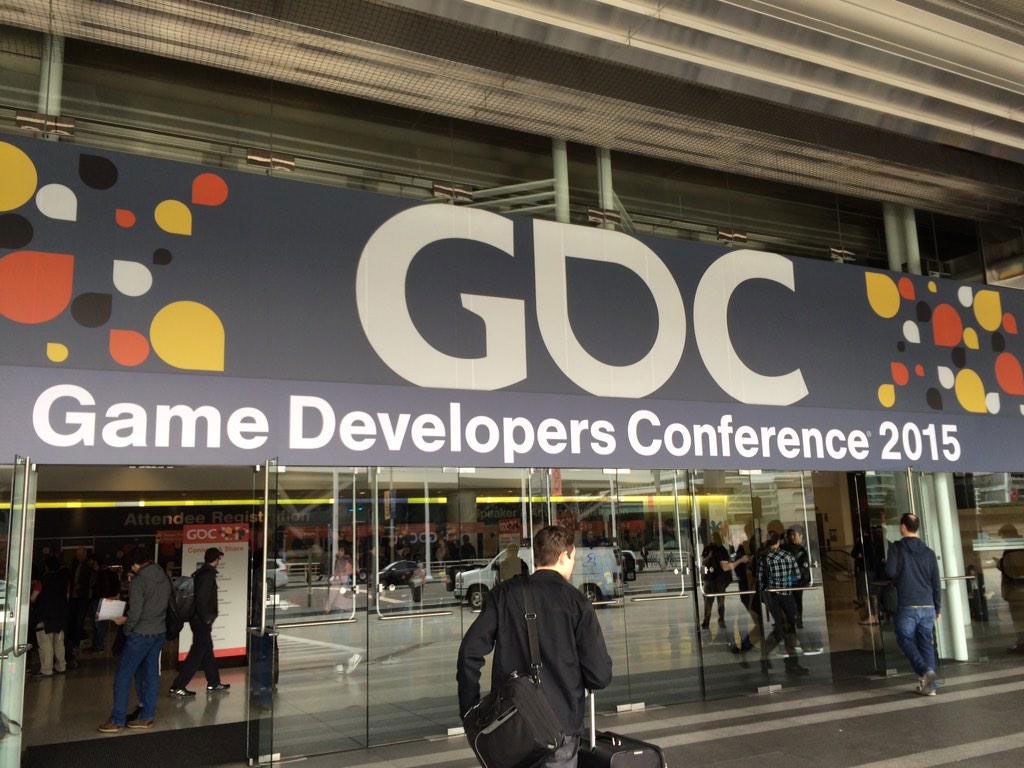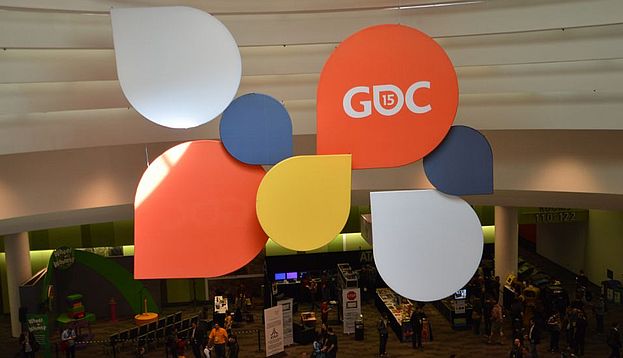The 2015 Game Developers Conference is ended, and it’s back to work for the 26,000 attendees. As usual, though, the GDC leaves an indelible impression, and plenty of information to digest. As well, the conference is a window into the future of the game industry, as developers (and the companies that seek to influence or sell to them) are showing by word and deed what will be important in the future.
“As with every year, GDC offered a glimpse into the future of gaming, but still honored the history of the industry,” said Meggan Scavio, general manager of the event. “This year’s success is a testament to the hard work of the staff, volunteers, speakers, indies and students who maintained a fun and safe environment for everyone at the show. As the conference enters its 30th year, we reflect on the tremendous growth in the medium of video games, and we’re thankful for the friendly faces, engrossing debates and friendly discussions we’ve had along the way.”
First of all, the very size of the show tells you something important — the game industry continues to grow (the number of attendees is a new record), and all segments of the industry are looking to improve. Gaming is becoming an ever more important part of the global culture, and its near-ubiquity means plenty of opportunity for those who can create interesting interactive experiences.
The new hotness this year is clearly attached to virtual reality (VR) and augmented reality (AR) in a variety of flavors. VR and AR were everywhere at GDC, from the Expo floor to a variety of sessions to a number of compelling demos. Ah, but will VR or AR be The Next Big Thing That’s hard to say at this point. SuperData CEO Joost van Dreunen feels that the sheer scope of the investment into the category means there will be a good-sized audience. Then again, 3D TV was going to be a huge thing, as was 3D displays in gaming — and that fizzled out.
Still, interest and excitement over VR and AR is clearly high in the game development community despite the fact that we still don’t know when these devices will arrive or how much they will cost. Many developers see the opportunity to get in on the ground floor of a market segment that may become huge, and they are eager to be there when it does. After watching how early leaders in social and mobile games used those new segments to grow their companies, it’s easy to see the appeal.
At the same time, larger publishers are more cautious. Trying to create a AAA equivalent title for VR would be a very costly undertaking, and there are certainly more dependable ways to invest that sort of capital in games. For now, big game publishers are mostly staying on the sidelines, adopting a wait and see attitude. The exceptions, of course, are Sony and Microsoft, who have their own VR/AR hardware under development, and thus plan to be at the forefront of whatever size industry develops — while making money from both the hardware and the software.

Elsewhere at GDC, we saw the newer segments of the game industry taking increasing mind share among sessions and summits. An entire summit was devoted to eSports, for instance, showing the growing influence of that sector. Riot Games had a number of sessions dealing with player behavior and how this can be made better industry-wide, a laudable goal.
Mobile games and online games were, of course, very well represented in the sessions, but you could see the real strength of those sectors in the job fair, where hiring was dominated by mobile and online studios. The industry isn’t staffing up in traditional sectors, but many people are still moving into mobile and online games. There’s plenty of vigor in mobile games, as many seem to feel that we are still at the very early stages of what mobile games can and should become.
Middleware is flourishing, with Unity’s booth occupying a prime piece of real estate right at the front of the Expo as a sign of how important that category is to developers. Today, it’s a rare developer that codes their own engine, when you can work in Unreal Engine 4 or Unity and see much of the hard work already done for you. There are also plenty of companies offering animation help, motion-capture, lighting and sound support, and every other possible assistance that developers could want in making games. With more and more game developers, there are more and more opportunities to sell them tools.
That tool industy isn’t confined to the development end of the business. Companies that address business and marketing functions were very much in evidence, offering help to developers in marketing, advertising, monetization, and community. The power of technology is now being harnessed to help marketers and business development and community relations, and that’s vital to the health of developers — especially smaller ones.
The aspiring developer isn’t being neglected either. We can see just how important the games industry is by the number of university programs offering degrees for it, and many of them had booths in the GDC Expo. Games are at the intersection of Art and Technology, and universities are working to teach students the disciplines they need to produce games. It’s not just practical education, either — many of the universities are conducting research into games, and those research programs may well influence the games of the future.
While new areas of the gaming industry were very much in evidence at GDC, consoles are still seen as the premium game experience — and the home of the big-budget games that define the very industry for so many people. That’s perhaps why the very concept of the console is under assault. Two big companies, Nvidia and Valve, are among those assaulting the very definition of the console. Valve is attempting to bring PC gaming into the living room right smack-dab next to consoles with a variety of Steam Machines, while Nvidia’s Shield console is bringing both high-quality Android gaming and PC game streaming into the same spot. Will they succeed That’s not clear, but the competition will be fierce — and great for gamers.
Overall, GDC 2015 demonstrates that there is no one true path to success in games. The game industry is big enough to allow multiple paths, and there’s plenty of exploration going on as companies large and small seek to satisfy the growing demand for games around the world. It’s an exciting time in the game industry, and that excitement was very much in evidence throughout GDC 2015.

